
These timelines apply whether you have chosen Follicular Unit Transplant (FUT) or Follicular Unit Extraction (FUE) procedures.
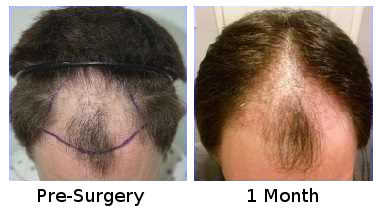
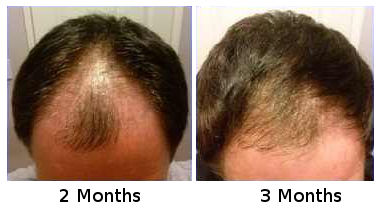
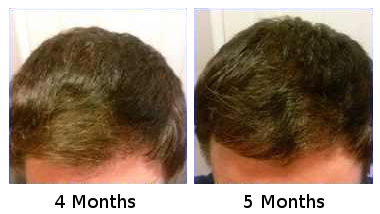
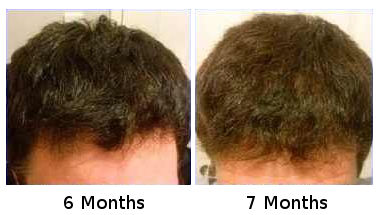
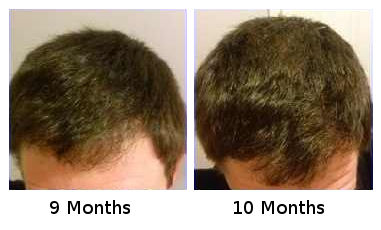
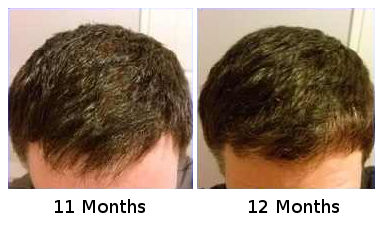
Day of hair transplant. The day begins early for the doctor and his patient. Depending on the size and location of the transplant, the procedure can last from 3 hours to over 8 hours. When the patient is finished, the doctor will review exactly how to care for the grafts until the patient returns to have their transplants examined and their hair washed. The doctor may prescribe an antibiotic and/or pain medication to help with the postoperative recovery after the procedure.
The first 2 weeks following a hair transplant are the most critical. The doctor will provide the patient with detailed instruction booklets on precisely how to care for the newly transplanted grafts. During the first 5 days, the patient will experience swelling of the forehead and the back of the head, which is the donor area. The skin may also look red at the areas where all the tiny incisions were made for the newly transplanted hairs. This redness usually goes away after the first week or 2. After only a few days, the donor area is no longer tender.
At this point, the patient no longer feels any swelling and the redness should only be faint or completely gone. For each follicular unit transplanted, a “crust” will form which is the attached skin layer drying out. By day 10, all the crusting should be gone and the transplanted hairs will appear like a “crew-cut” haircut. Lastly, around day 10, the sutures or staples will be removed.
The transplanted hairs will start to shed at this point, and by the end of the 3rd/4th week, most will be gone. This is a normal part of the healing process and is totally expected. The newly transplanted hairs go through a shedding process as the actual hair shaft is released, but the actual follicular unit and bulb are completely intact and are starting to grow a new hair shaft. This is part of the normal hair cycle.
The hair follicles have entered into the resting phase of their cycle. The length of the resting phase can vary before they start to grow again. At this point, the patient will appear exactly as they did prior to surgery with respect to the amount of hair present. At this time, the patient is able to style and color their hair as they desire.
The new hairs should start coming out. For some patients, their transplanted hairs may have started growing early in the timeline; for others, they may start growing later. The patient will see the new transplants, but they will be thin at this stage as they begin to emerge from the scalp. Most of the native hair will be growing back at this time. The donor area is healing and any redness at the donor site will resolve.
The patient will start to see a considerable amount of hair emerging from the scalp. The hairs are thinner; many of the transplanted hairs will be over 3 inches or longer and can be groomed. Toward the end of this period, the hair will show textural changes and start to thicken up. The donor area will be completely healed at this point.
The patient will have achieved about 80% of the growth of the transplanted hairs. Most of the hairs will have emerged from the scalp. The patient may notice that the hairs have a little “curvature” to them. This is from the micro-scarring that is at the recipient sites. This resolves and the hair takes on its native appearance over the next year.
The final appearance from the hair transplant can be appreciated at this point. For some patients, they achieve the full appearance by 1 year; others will take longer for the hairs to emerge and increase their density and thickness. Also, as the hairs grows longer, they provide a fuller appearance as the volume of hair is increased at the transplanted area.

If you are suffering from slow or rapid hair loss and your hair thinning is becoming noticeable, or if you have balding that you wish to cover with new hair growth, we invite you to contact our hair restoration service today. You can find the answers to the most frequently asked questions here. Your doctors in Korea will provide a comprehensive medical and hair loss history, and scalp and hair analysis that will allow them to provide each patient with an accurate diagnosis so that a patient-specific treatment plan can be put into action. Contact us now.

Please send us your email address, and one of our representatives will personally contact you as soon as possible.
Your email address will never be sold or spammed.